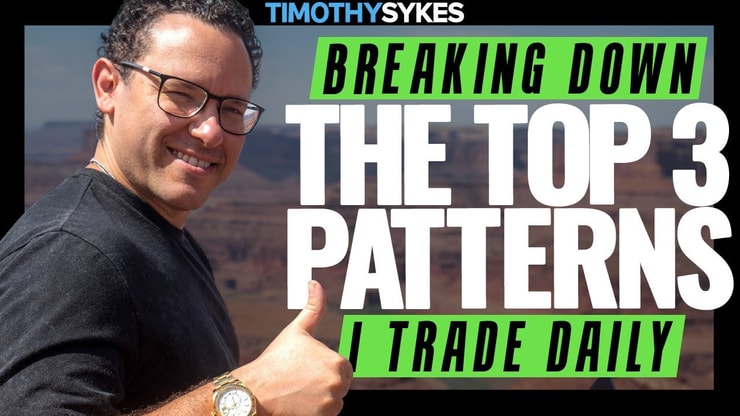*Written by AI, Edited by Humans
If you’re new to the trading world, the term “rectangle pattern” might seem like something out of geometry class. But it’s a vital tool in trading, applied in stocks, forex, futures, and commodities. It’s a formation that occurs on a chart and represents a pause in the trend, often leading to a continuation or reversal. Understanding the rectangle pattern can provide a significant edge in your trading strategy.
The rectangle pattern forms between parallel support and resistance lines, with price action that consolidates for a period. It’s like a battleground between buyers and sellers, where neither gains the upper hand, until the breakout occurs. Recognizing this pattern and trading it effectively requires a deep understanding of market behavior, trend analysis, and risk management.
Traders around the globe use this pattern to spot potential breakouts in various market conditions. It’s not a magic trick; it’s about interpreting the chart patterns correctly and placing orders at the right time. We’ll explore the rectangle pattern in detail, discussing its benefits, limitations, and various types.
Table of Contents
- 1 What Is the Rectangle Pattern in Trading?
- 2 How to Identify a Rectangle Chart Pattern
- 3 Benefits of Using Rectangle Pattern for Breakouts
- 4 How To Use Rectangle Chart Patterns to Trade Breakouts
- 5 Types of Rectangle Pattern
- 6 Analyzing a Rectangle Chart Pattern
- 7 Trading Strategies With Rectangle Chart Pattern
- 8 Rectangle Chart Pattern Example
- 9 How To Improve the Performance of the Rectangles
- 10 Key Takeaways
- 11 Frequently Asked Questions
What Is the Rectangle Pattern in Trading?
The rectangle pattern is one of the fundamental patterns that traders use to analyze market trends. In a rectangle pattern, the price action moves sideways, creating parallel lines of support and resistance. The market seems to pause, neither going upwards nor downwards.
It’s a waiting game where traders, investors, and even brokers closely watch the chart, anticipating the breakout from this consolidation range. When the breakout occurs, it can either move in the direction of the previous trend or reverse. Recognizing a rectangle pattern helps traders make informed decisions, aligning trades with market momentum.
How to Identify a Rectangle Chart Pattern
Identifying a rectangle chart pattern involves recognizing areas of support and resistance where price consolidates over a period. It resembles a rectangle, with tops and bottoms forming the boundary. This pattern often appears as a continuation pattern in an existing trend, be it long or short. Observing candlestick formations, trading volumes, and other indicators helps in proper identification. This stage requires careful analysis, as it sets the base for further trading decisions.
It all comes down to charting.
When it comes to charts, StocksToTrade is first on my list. It’s a powerful trading platform that integrates with most major brokers. I helped to design it, which means it has all the trading indicators, news sources, and stock screening capabilities that traders like me look for in a platform.
Grab your 14-day StocksToTrade trial today — it’s only $7!
Determining Support and Resistance Levels
Identifying a rectangle pattern starts with recognizing the support and resistance levels. The support level is where the price usually bounces upwards, while the resistance level is where the price typically faces a downward force. By observing the highs and lows in a chart, one can sketch these levels and notice a range where the price moves sideways.
Discerning Previous Trend Direction
Understanding the previous trend direction is essential in trading rectangle patterns. If the price was in an uptrend before the pattern, it’s a bullish rectangle. If it was in a downtrend, it’s a bearish one. Analyzing this direction helps in setting the proper entry and exit positions and managing the risk.
More Breaking News
- BTBT’s Ethereum Strategy Sparks Investor Interest
- The Rise of CHEF: Time to Consider?
- CIFR Stock’s Unexpected Surge: A Deep Dive
Evaluating Price Swings and Periods of Consolidation or Indecision
Price swings within the rectangle provide vital information. When price action hits the support and resistance lines multiple times without breaking, it’s in a consolidation phase. This pause in trend signifies that the market is indecisive, and traders are waiting for confirmation before making a move.
Benefits of Using Rectangle Pattern for Breakouts
Trading breakouts with rectangle patterns offers a chance to catch significant moves in the market. It allows traders to set specific entry and exit points, profit targets, and stop-loss levels. The shape of the rectangle itself can provide insights into the potential height of the breakout.
But it’s not just about the pattern; it’s about understanding the underlying market conditions, technical analysis, and managing your risk. By using the rectangle pattern, you’re adding one more tool to your trading toolbox, enabling better decision-making and potentially higher profits.
How To Use Rectangle Chart Patterns to Trade Breakouts
Trading breakouts using rectangle chart patterns requires understanding and confirmation. You’ll need to identify the support and resistance lines, wait for the price to break these lines, and use volume as confirmation of the move. Setting proper targets and stop loss ensures that you’re managing your risk effectively.
Knowing when to enter and exit a trade based on rectangle patterns isn’t about guessing; it’s about leveraging the information and tools at your disposal. Following this strategy can guide traders in both the forex and stock market towards more systematic and profitable trades.
Types of Rectangle Pattern
The rectangle pattern is categorized into different types, such as continuation and reversal patterns. A continuation pattern suggests the trend will persist in the same direction, while a reversal pattern may signal a change. Bullish and bearish rectangles provide clues to the likely direction of the breakout. Understanding these different types requires studying previous price action, tops, and bottoms, and can be crucial in developing a trading strategy.
Understanding the various patterns in trading is essential, and the expanding wedge pattern is another vital tool. Similar to the rectangle pattern, the expanding wedge pattern can signal potential reversals or continuations in the market. Recognizing these patterns and knowing how to trade them can provide a significant advantage. If you’re interested in exploring the expanding wedge pattern further, you can read this in-depth analysis.
Bullish Rectangle Pattern
A bullish rectangle pattern forms during an uptrend and typically leads to a continuation of that trend. Traders look for the price to break the resistance level to the upside as confirmation. The pattern indicates that buyers are in control, and there’s potential for further upward movement.
Bearish Rectangle Pattern
In contrast, a bearish rectangle pattern forms during a downtrend. The price action consolidates, and traders wait for a breakout below the support line as a sign to sell. It’s a signal that sellers are dominating, and the downtrend may continue.
Continuation Rectangle Patterns
Continuation rectangle patterns occur within a trend and usually signal that the trend will resume after the pause. It’s an opportunity for traders to align with the market direction and capitalize on the continuation of the trend.
Reversal Rectangle Patterns
Reversal rectangle patterns are less common but can signal a significant change in trend direction. Traders must exercise caution and use additional indicators for confirmation, as these patterns might lead to false breakouts.
Analyzing a Rectangle Chart Pattern
Analyzing a rectangle chart pattern is a step beyond mere identification. It includes evaluating the risk and reward, entry and exit points, and leveraging indicators like candlestick patterns. The height of the rectangle can sometimes provide a profit target, while the pattern’s formation can indicate potential reversals. This level of analysis often requires a blend of technical and fundamental insights to make informed trading decisions.
Analyzing chart patterns goes beyond mere identification. Along with the rectangle pattern, the wedge pattern is another essential tool that traders use to predict market trends. It can be a continuation or reversal pattern, depending on the preceding trend. Understanding the wedge pattern, along with other technical tools, can enhance your trading decisions. For a comprehensive guide on the wedge pattern, you can refer to this detailed article.
False Breakouts and Re-Testing of Support/Resistance Lines
False breakouts are a common concern when trading rectangle patterns. Price may seem to break the support or resistance line but then revert. Re-testing these lines and using volume as a confirmation tool helps in avoiding false signals.
Identifying Profit Targets and Stop-losses
Profit targets and stop-losses are vital in rectangle pattern trading. Traders often use the height of the rectangle to determine the profit target and place stop-losses just beyond the support or resistance lines. It’s a methodical way to manage risk and reward.
Trading Strategies With Rectangle Chart Pattern
Using rectangle chart patterns as part of a broader trading strategy provides a systematic approach. Incorporating other indicators, analyzing volume, and understanding the broader market context enhance the effectiveness of the pattern. Be it commodities, futures, or options, the rectangle pattern can fit into various trading strategies.
It’s not about blindly following a pattern; it’s about integrating it into your trading routine, understanding its limitations, and using it as a complementary tool. Combining the rectangle pattern with other technical and fundamental analysis techniques can create a robust and successful trading approach.
Incorporating various patterns into your trading strategy can lead to more systematic and profitable trades. The bear pennant pattern is one such name that can be used to anticipate the case of a continued downtrend. It’s a short-term pattern that can provide quick insights into market behavior.
Understanding how to trade the bear pennant pattern, along with other patterns like the rectangle and triangle, can create a robust trading approach. Learn more about the bear pennant pattern and how to utilize it in your strategy here.
Rectangle Chart Pattern Example
Studying real-life examples of rectangle chart patterns is invaluable. It’s more than a theoretical exercise; it’s about seeing how the pattern plays out in live markets, with real-world highs and lows. Analyzing examples in different assets, like forex or stocks, helps in understanding how the pattern behaves and how to trade it effectively.
An example of a bullish rectangle pattern in a specific stock, where the price breaks the resistance level and moves upward, offers a clear illustration of the setup, entry, and exit points. Similarly, a bearish rectangle in a forex pair demonstrates the thought process behind a sell trade.
How To Improve the Performance of the Rectangles
Improving performance when trading rectangles requires constant refinement and adaptation. This can include monitoring leverages, managing margin requirements, and employing various trading tools such as indicators. Understanding the role of gaps, reversals, and continuation patterns helps in honing skills. Traders often turn to articles, mentorship, or curated lists of best practices to enhance their ability to trade rectangles effectively.
Volume and the Rectangle Pattern
Volume plays a critical role in the rectangle pattern. An increase in volume during the breakout offers confirmation and validates the move. Monitoring volume adds an extra layer of information and enhances the reliability of the pattern.
The Length of the Preceding Trend and Its Impact on the Rectangle Pattern
The length and strength of the preceding trend can impact the rectangle pattern’s performance. A well-established trend leading to a rectangle may signal a stronger breakout or reversal. Understanding the broader context is vital in trading this pattern successfully.
The Role of Gaps in the Rectangle Pattern
Gaps in trading refer to the spaces on a chart where no trading activity has occurred. In the context of a rectangle pattern, gaps can play a vital role in signifying potential breakouts or false signals. Understanding how to interpret these gaps can provide additional insights into the trend’s strength and future direction.
Key Takeaways
The rectangle pattern offers various opportunities for traders in both long and short positions. Recognizing the pattern, understanding its types, analyzing its potential, and managing the associated risks forms the essence of trading with this pattern. It’s not just about making money but building a skill set that supports continuous learning and improvement.
It isn’t a silver bullet for your trading plan — but the rectangle pattern is one of the many topics you should learn as part of your trading education!
Trading isn’t rocket science. It’s a skill you build and work on like any other. Trading has changed my life, and I think this way of life should be open to more people…
I’ve built my Trading Challenge to pass on the things I had to learn for myself. It’s the kind of community that I wish I had when I was starting out.
We don’t accept everyone. If you’re up for the challenge — I want to hear from you.
Apply to the Trading Challenge here.
Trading is a battlefield. The more knowledge you have, the better prepared you’ll be.
Do you use the rectangle pattern in your trading strategy? Let me know in the comments — I love hearing from my readers!
Frequently Asked Questions
How Reliable is a Rectangle Pattern?
The reliability of a rectangle pattern can vary based on market conditions, the asset being traded, and the time frame. It can be used effectively in stocks, currency, and commodities trading, but understanding its limitations is vital.
How Do You Trade Bearish Rectangles?
Trading bearish rectangles involves recognizing a potential downtrend continuation or reversal. Analyzing candlestick patterns, support levels, and using appropriate leverage are key components in this process.
How Can I Identify a False Breakout in a Rectangle Pattern?
Identifying false breakouts requires understanding the underlying market dynamics, including volume, price action, and potential reversals. Tools and techniques may vary depending on the asset and market conditions.
Can I Use the Rectangle Pattern in Different Market Conditions?
Yes, the rectangle pattern can be adapted to various market conditions, but its effectiveness might vary. It requires careful analysis and a clear understanding of underlying factors such as currency fluctuations and leverage.
What Indicators Complement the Rectangle Pattern in Trading?
Several indicators can complement the rectangle pattern in trading. These might include Moving Averages, RSI, Volume Oscillators, and more. These tools, when used with proper risk management, can enhance the analysis and trading decisions related to the rectangle pattern.











Leave a reply